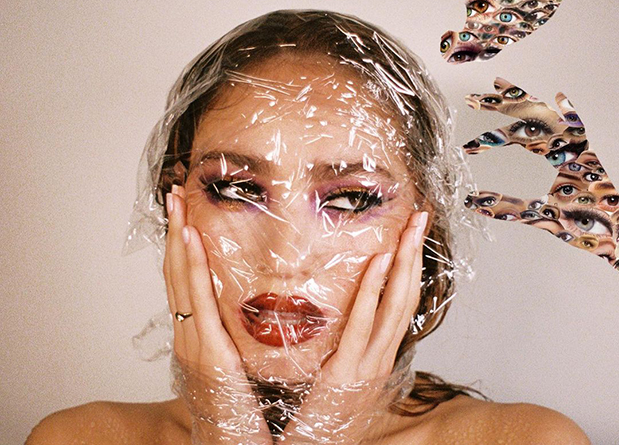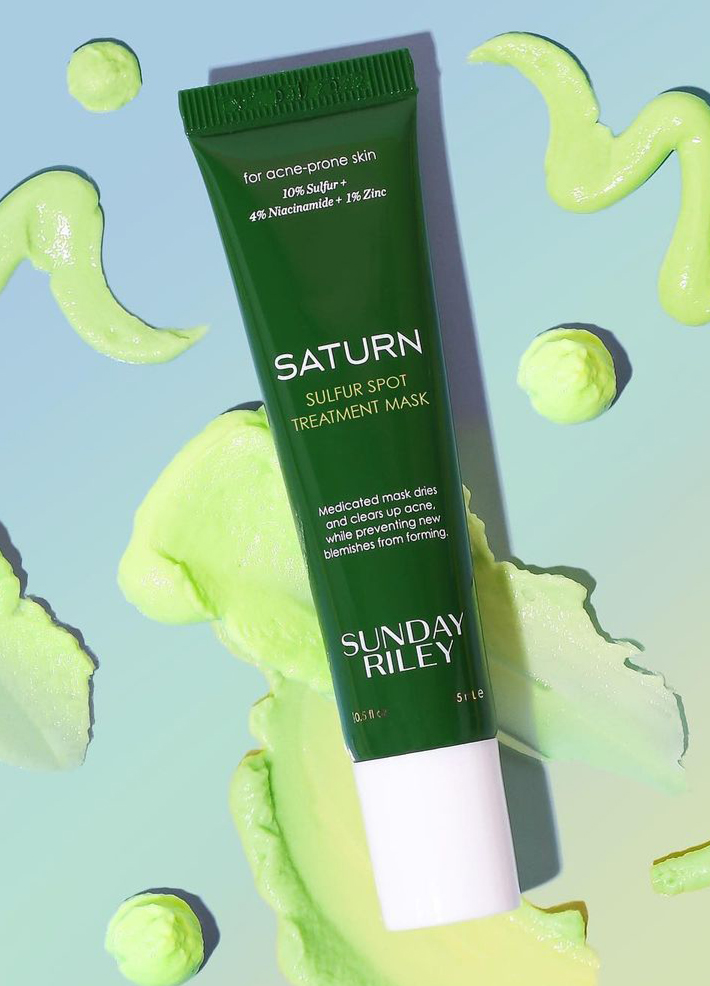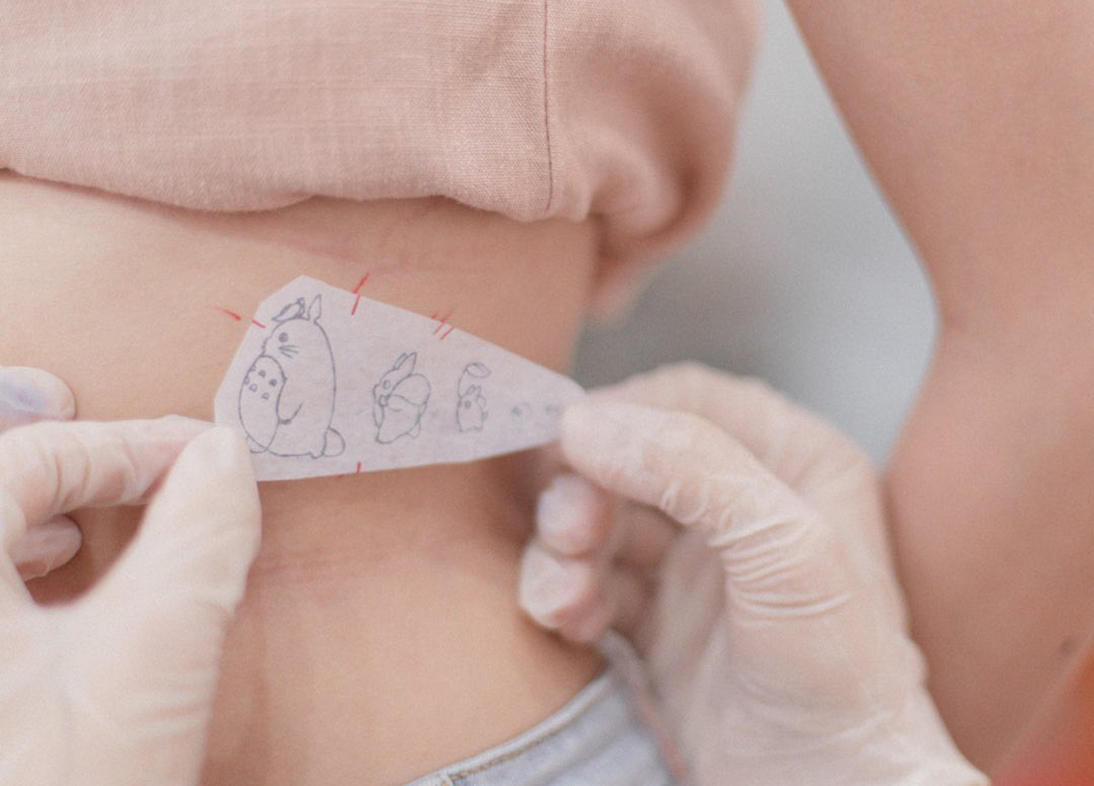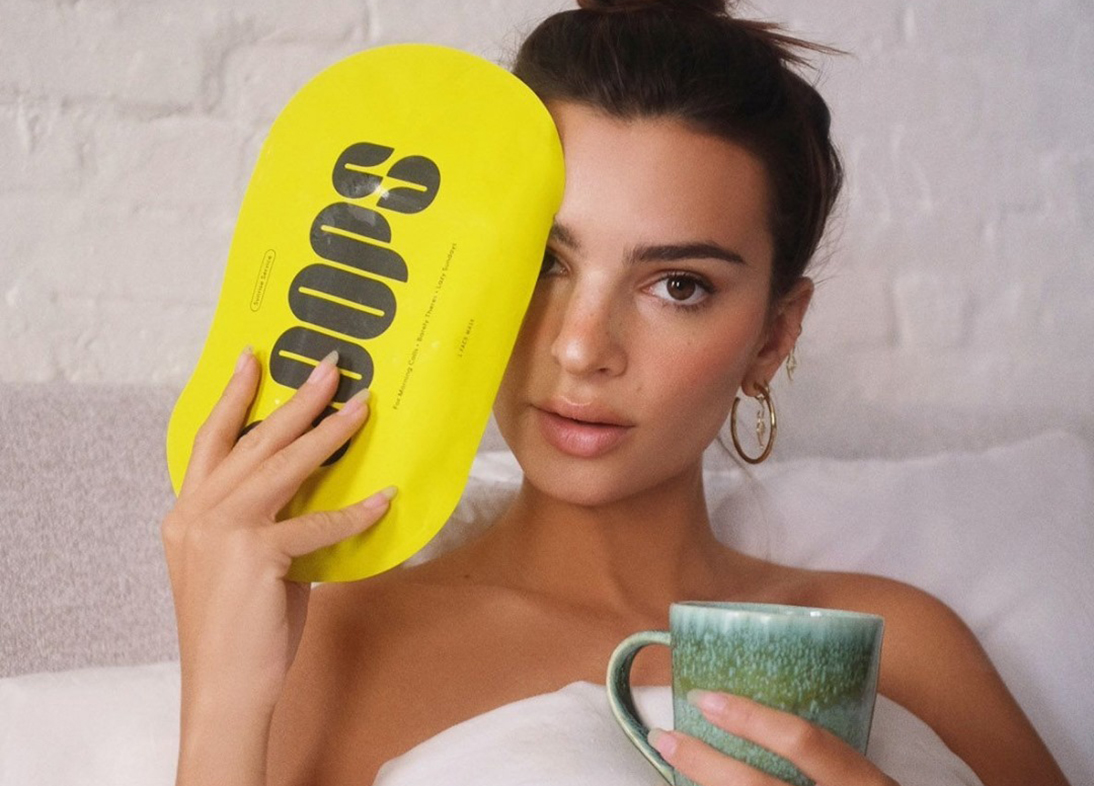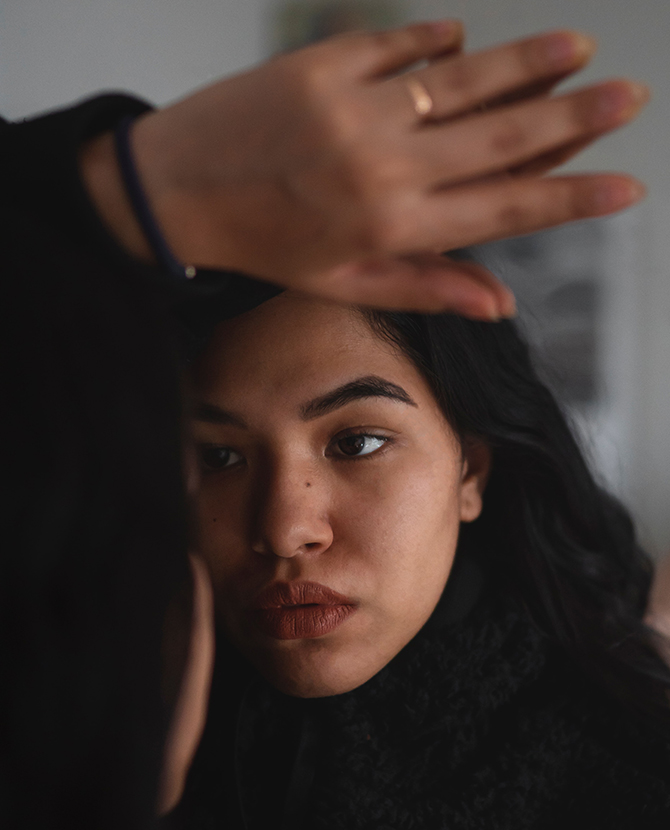I have fifteen minutes before my next Zoom, and I suspect everyone will keep their camera on, so I run to the bathroom. I darken my eyes to add definition, add a flush to my cheeks to hide the fact that I haven’t left the house for two days. On the bright side though, I can skip sunscreen, and since I don’t have to worry about staining a mask, I add colour to my lips and treat my skin to foundation. There’s no need to blend well: the pixels will soften it all. In the next four hours I have four more meetings, four bathroom refreshment sessions, then I’ll take it all off and go to bed, mourning the fact that I’ve finished an entire bottle of makeup remover without having seen a single person face to face.
With so much going on it may seem shallow to ruminate on how pandemic has affected the beauty industry, and how we participate in it. But if fashion is a conduit for self-expression, then beauty is the perfect topic to analyse after a year that forced us to get to know ourselves more intimately. And though all anyone could really do in such an immensely difficult time was survive, the never-ending hours many of us spent confined to our bedrooms, begot new opportunities for reinvention.
The eyes have it
Makeup has always offered an easy, temporary way to participate in self-creation, and, in a time with little other reason to get out of bed, it provided an outlet for creativity. To play and experiment required an open mind and curiosity: after all, with mask mandates firmly in place, all the previously popular makeup trends — extreme contours, faux freckles, nose blush — were pretty much nullified. In their place, there was an uptick of experimentation around the eyes, the sole feature left visible to the public eye.
More than a year into the pandemic and graphic liner is flourishing, popularised by shows like Euphoria and perfected by many makeup artists on social media. Perhaps it’s not surprising, considering these mask-proof looks require time and energy, focus and precision. Achieving symmetrical, clean lines takes skill, and thanks to the new hours of free time, practice has yielded final looks that are as beautiful as they are rewarding.
Redefined standards
But COVID-19 has impacted the beauty world more than just making way for sharp, bright wings: makeup trends in the past year reflect cultural shifts the pandemic has catalysed. There’s a focus on how products are used not only as a tool for self-exploration, but also as a vehicle for larger conversations on identity. With a global focus on community support and self-actualisation, individuals called for change within the industry, and brands awkwardly lagged behind. Struggling to marry revolutionary concepts with the need for profit, they awkwardly performed often flimsy activism.
A host of black squares and masterfully done “We Stand With You” graphics littered the feeds of almost every makeup artist, brand, and beauty influencer, though for some, that was as far as their connection to the movement went. The beauty industry is not exempt from the systems of oppression that dominate the world, and inner workings failed to provide the necessary support that these emphatic illustrations promised. Consider ‘Pull Up or Shut Up’, Uoma Beauty Founder Sharon Chuter’s direct action movement, which called on brands within the industry to “publicly release … the number of black employees they have in their organisations at corporate level and in leadership roles.” The movement lifted the veil, and showed that the well-meaning messages were empty without an internal commitment to change.
Look at the case of ‘Outta The Gloss’, the platform created by Black and Brown Glossier employees to document the sustained mistreatment they experienced working in the flagship store. Though OtG amassed a hefty following and clearly listed steps for reconciliation, the beauty brand repeatedly failed to meet their demands, and the employees eventually called for a total boycott. Outwardly, Glossier, which was worth $1.2B in 2019, donated one million dollars to social justice organisations, but when the call came from inside the house, they invariably shirked responsibility. In an era where activism is rapidly co-opted and used as a marketing tool, hollow promises became a trend themselves — outward pledges, internal failures. Sure, donations are great, and help fund positive change, but donations alone do not an ethical business make.
And all these empty action statements by multi-billion dollar companies are complicated by the beauty world’s role in perpetuating and defining beauty standards themselves. Makeup allows us to enhance our features: sometimes, products fail to address needs of darker skin tones, other times, they allow people to further perpetuate racism; through trends such as ‘Fox Eyes’ and over-lining lips. Many writers, vloggers, and influencers have described at length how harmful it is to see their features become a trend they’re excluded from.
While the beauty industry clearly has a long way to go, there are positive changes afoot. Social media has equalised the playing field, and with less need to go through traditional media to be heard, people are creating the future they want to see. One particularly exciting example of this is the hashtag #MasculineMakeup, where users provide tutorials on using makeup to present more masculine, proving that makeup isn’t inherently feminine, or gendered at all. Another is the emergence of pages like @EditorialBlk, founded by Wendy Asumadu (@wendysworld_xox) to spotlight Black makeup artists on their own terms and provide them a platform that supports their needs and dreams.
Creativity reigns supreme
Finally, with so much time on our hands, there has been a rise in makeup that is purely creative, created less to attract or impress individuals, and more to just have fun. In my personal orbit, I’ve seen a huge decline of “Insta-Baddie” tutorials — the Kardashian-chic trend of chiseling, highlighting, and duck-facing to a filtered perfection: with more time alone, people have more room to create looks outside of traditional beauty norms.
Making art during a pandemic is extremely difficult, which makes the wildly intricate looks people are sporting all the more impressive. There’s a focus on the ephemeral nature of makeup, with a crop of Reels, tweets, and Tiktoks about doing makeup for hours, immediately washing it off, and going back to bed.
Newness in a new normal
Though COVID-19 is still raging across the world, as vaccination rates increase, more people are feeling comfortable leaving the house — and potentially, exposing their whole face. A cursory glance at any leading beauty brands’ website reveals they’re planning accordingly: Pat McGrath and Drunk Elephant, among many others, have released their first ever blush products, Milk Makeup created another on-the-go sunscreen/foundation hybrid, and there are plenty of new drops of dewey highlighters and bold lipsticks.
Those who hold influence
Further, trends aren’t decided solely by publications, rather, influencers and TikTok stars who hold real sway on what subsects of the population interact with, buy and wear. Makeup artists @luciphyrr, @raincornelius and @char_baker have set the bar high on Instagram, and TikTok creators like @Meicrosoft, @CutCreaser and @Maytahmi have created simple guides anyone can follow. Of course, this isn’t to say celebrities and high fashion minds aren’t influential: musicians Doja Cat and Rico Nasty are amongst the many new celebrities spearheading innovative looks.
With social re-entry underway, we have a fresh slate, a new foundation to build upon. After such a long period of intense grief, it’s likely that there will be a surge in creative expression, and one hopes, collective joy. How we present ourselves matters — the cultural aesthetics matter, the ability to express ourselves matters. People want to be seen, they want to peacock, to celebrate, and in this desire, self-expression is a currency and a conduit for connection. That’s, surely, something we all could do with celebrating.
ADVERTISEMENT. CONTINUE READING BELOW
